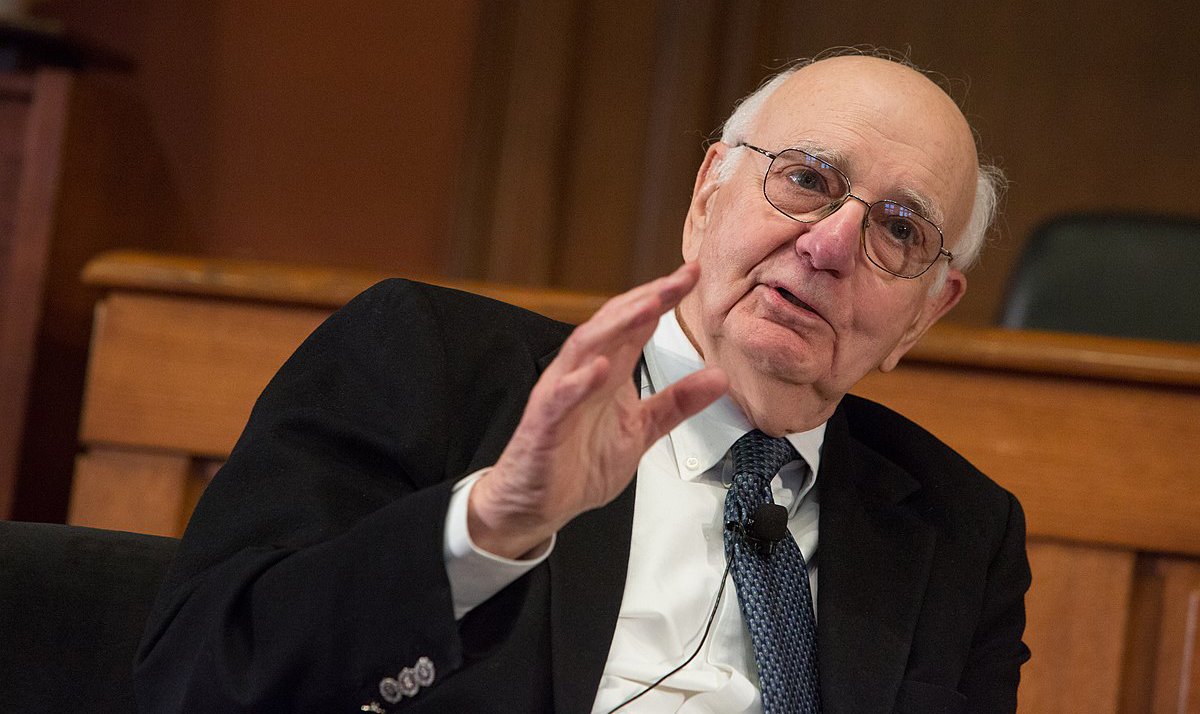“This is a time of testing — a testing not only of our capacity collectively to reach coherent and intelligent policies, but to stick with them.” — Paul Volcker, 9 October 1979
Paul Volcker and the Federal Open Market Committee (FOMC) should be commended for their unwavering commitment to tightening monetary policy during the recession of 1981 to 1982. Their actions effectively ended the era of stagflation that plagued the US during the Great Inflation of 1965 to 1982. It is important to remember that Volcker’s policies were highly controversial at the time, as he was navigating uncharted territory in terms of monetary policy.
While the United States has faced severe depressions and financial panics throughout its history, the Great Inflation was a unique challenge. Resolving this crisis required the Federal Reserve to implement untested policies that resulted in a deep recession, significant asset value declines, and high unemployment rates.
Volcker spoke to the American Bankers Association (ABA) in October 1979 to gain their support for his policies, fully aware that these measures would cause short-term pain and hardship. He appealed to their sense of collective responsibility, recognizing the importance of their role as stewards of the nation’s credit. The United States’ ability to maintain its creditworthiness has been crucial in fueling economic growth, resolving crises, and safeguarding against foreign threats.
The persistent inflation that plagued the nation in the 1970s was a result of policymakers’ failure to delay gratification. President Lyndon Johnson prioritized maintaining his Great Society programs and avoiding damage to his own re-election prospects, leading to an overly accommodative monetary policy. President Richard Nixon followed a similar path, and inflation became rampant. Rather than asserting the Federal Reserve’s independence, Fed chairs William McChesney Martin, Jr., and Arthur F. Burns succumbed to political pressure.
By allowing inflation to persist for so long, they made it more challenging for their successors to rein it in. Resolving the problem required even greater economic pain than if the Federal Reserve had intervened decisively earlier.
Volcker acknowledged the damage caused by the Fed’s previous lack of resolve, but he promised to persevere.
“Some would suggest that we, as a nation, lack the discipline to cope with inflation,” he told the ABA. “I simply do not accept that view.”
In September 2022, the US Bureau of Labor Statistics reported that the CPI increased at an annualized rate of 8.3%, putting additional pressure on the Federal Reserve to respond aggressively. When Jerome Powell states that the Fed will continue tightening until the job is done, it is believed that he is sincere. However, it remains to be seen if the Fed’s actions will align with these words in the coming months. The initial rate hikes and quantitative tightening were relatively painless, but the next phase is expected to be more challenging. If the Federal Reserve follows through, the economy will contract, unemployment will rise, and markets will fall. These sacrifices are necessary to prevent the current temporary inflationary event from evolving into another Great Inflation, which would threaten long-term prosperity.
In the Panic of 1907, J. Pierpont Morgan recognized that the failure of the Trust Company of America would have devastating consequences for the country. Morgan famously said, “This is where the trouble stops,” and orchestrated a rescue effort. Even after halting the run on the Trust Company of America, panic continued to spread on Wall Street. Morgan spent the next three weeks rallying support from various stakeholders to steer the United States away from disaster. His decisive leadership, combined with the fear of facing future crises without him, inspired the creation of the Federal Reserve six years later.
The current leadership of the Federal Reserve faces a similar tipping point. They must decide if they have the resolve to prevent a second Great Inflation. However, combating inflation should not be solely the responsibility of the Fed. It requires a collective effort to choose whether to cling to the excesses of the present or sacrifice now for a better future.
Ultimately, it is hoped that the latter path will be chosen.
If you liked this post, don’t forget to subscribe to the Enterprising Investor.
All posts reflect the opinion of the author and should not be construed as investment advice. The opinions expressed do not necessarily reflect the views of CFA Institute or the author’s employer.
Image courtesy of the Edmond J. Safra Center for Ethics. This file is licensed under the Creative Commons Attribution 2.0 Generic license. Cropped.
Professional Learning for CFA Institute Members
CFA Institute members have the autonomy to self-determine and report professional learning (PL) credits earned, including content from the Enterprising Investor. Members can easily record credits using the online PL tracker.







